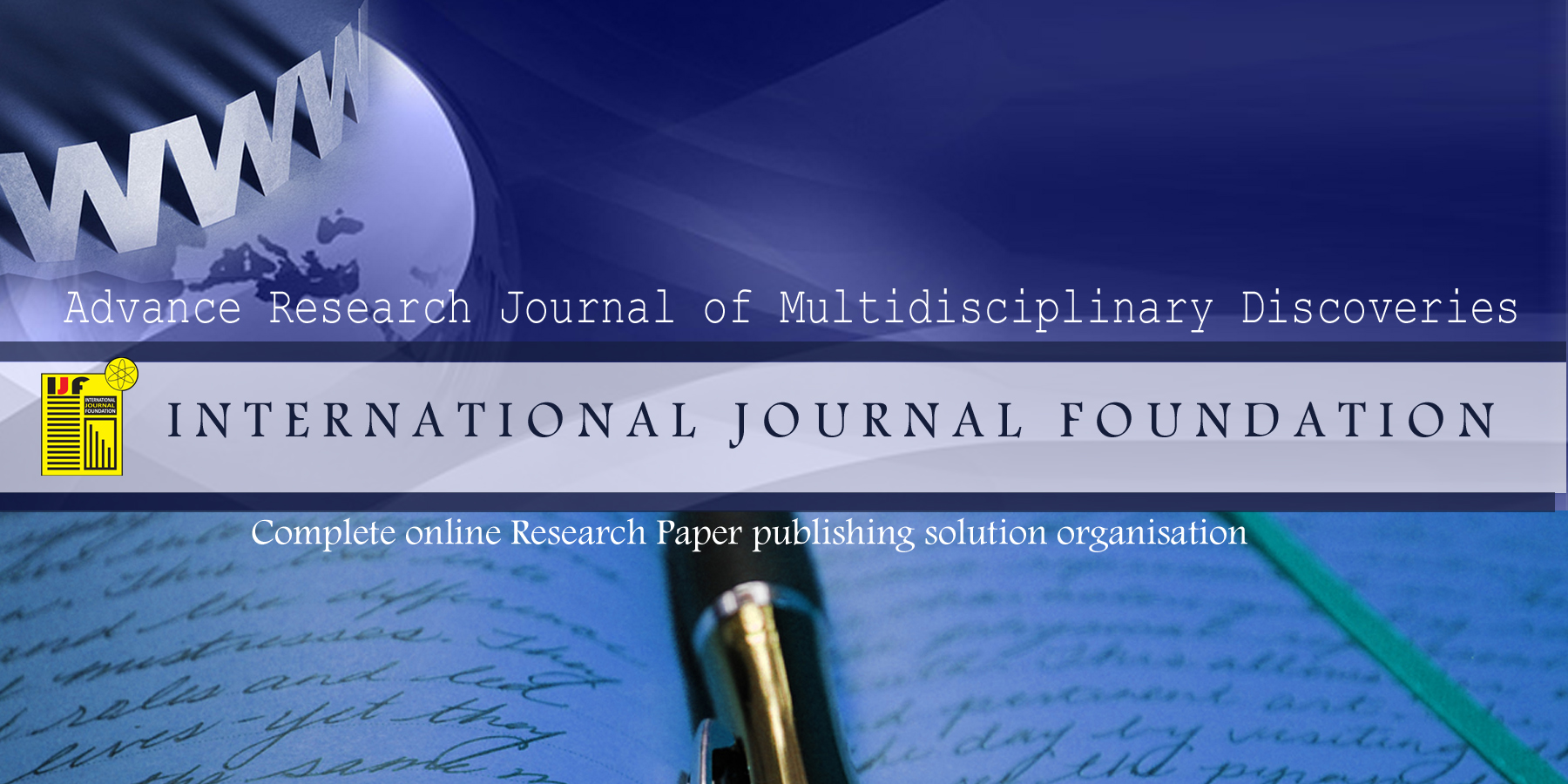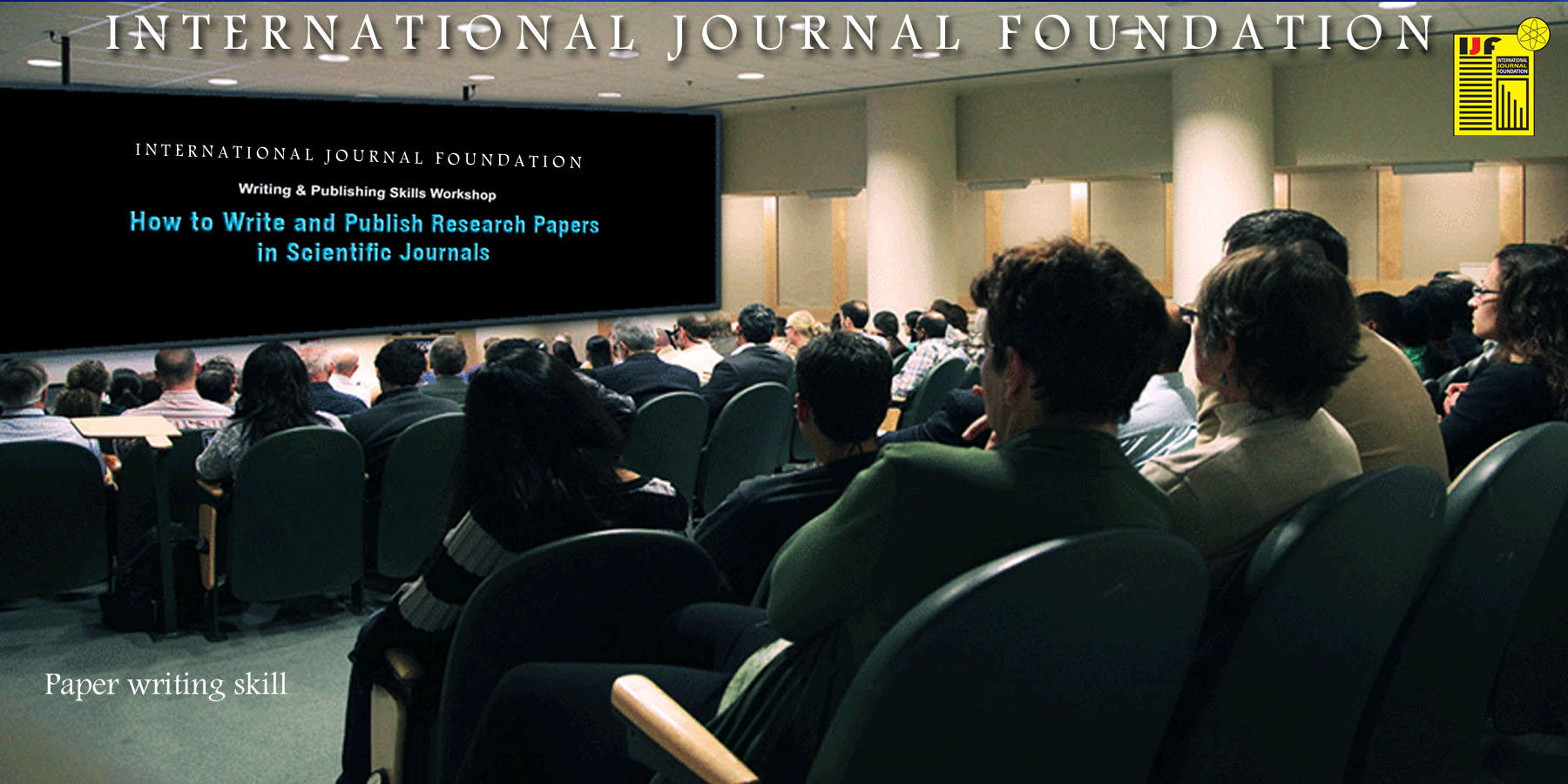2021
APRIL 2021/ Vol.60.0/ Issue-I
CATEGORY : Research Topic on Medical Science [ Original Research Article ]
| SL.No. | Detailed information of the published article |
| 1 | Manuscript Title : Histomorphological spectrum of hyperpigmented skin lesions: Are all of melanocytic origin? – A retrospective study Author’s Name : Sushma K L, Manjunath H K, Bhargavi Mohan, Dharani V C, Sushma T A, Vinitra K Article Type : ORIGINAL RESEARCH ARTICLE Country from : INDIA Date of Publication: 25-07-2021 Journal Name : Advance Research Journal of Multidisciplinary Discoveries [ ISSN : 2456-1045 ] Article Identification : Vol. 60.0/Issue-I/Chapter-I/Page – 01-08 [APRIL-2021 EDITION ] Article Code : MDS-V60-I1-C1-APR-2021 Status : Officially published Publisher : International Journal Foundation Download PDF : Full article (Pdf) Doi No : 10.6084/m9.figshare.15047997 ———————————————————————————————————————————– ABSTRACT: Background: Hyperpigmented skin lesions include both melanocytic as well as non-melanocytic lesions. Hyperpigmentation of the skin reflect underlying benign or malignant lesions more than just being a cosmetic deformity. Histopathology acts as a cornerstone in diagnosing these lesions. click here Aims and Objective: In the present study, we intend to categorize the hyperpigmented skin lesions based on the divergent histomorphological features and to differentiate melanocytic lesions from its non-melanocytic mimickers. Materials and Methods: This was a retrospective, descriptive study conducted from January 2017 to December 2019 on 80 cases of hyperpigmented skin lesions, at BGS Global Institute of Medical Sciences. Results: A total of 80 cases were studied. Of the 80 cases, 38 (48%) were melanocytic and 42 (52%) were non-melanocytic lesions. Age group commonly affected was between 31-40 years (25%); with male to female ratio being 1:1. The most common site of involvement was the extremities 46 (58%). Most common pigmented skin lesion in our study was melanocytic nevi (n=33) (41%) among the melanocytic lesions and Erythema dyschromicum perstans (n=13) (16%) among the non-melanocytic lesions. Conclusion: Pigmented skin lesions are one of the most common causes for dermatological consultation. Majority are benign, while a small minority are malignant. Therefore, all clinically pigmented skin lesions should be submitted for histopathological evaluation so as to not miss a small percentage of malignant lesions.KEYWORDS: melanocytic lesions, pigmented lesion, cutaneous melanocytic, nevus.

|
CATEGORY : Research Topic on Agricultural Science [ Original Research Article ]
| SL.No. | Detailed information of the published article |
| 2 | Manuscript Title : Prevention of Bacterial Blight in Oryza sativa (rice) caused by Xanthomonas oryzae pv. oryzae Author’s Name : Sristi Rajput1, D. Srinivasa Rao2, K. L. Prathusha 3, Jithendra Kumar Naik4, Raghavendra Rao, M.V5 Article Type : ORIGINAL RESEARCH ARTICLE Country from : INDIA Date of Publication: 25-07-2021 Journal Name : Advance Research Journal of Multidisciplinary Discoveries [ ISSN : 2456-1045 ] Article Identification : Vol. 60.0/Issue-I/Chapter-II/Page – 09-14 [APRIL-2021 EDITION ] Article Code : AGRS-V60-I1-C2-APR-2021 Status : Officially published Publisher : International Journal Foundation Download PDF : Full article (Pdf) Doi No : 10.6084/m9.figshare.14823615 ———————————————————————————————————————————– ABSTRACT: Oryza sativa (rice) is a staple food crop all over the world, about more than 50% of the world’s population feed on rice. A large part of the total rice yield around the world is affected by various bacterial, fungal and viral diseases, one such disease is bacterial blight. click here Bacterial blight of rice has high epidemic potential and is destructive to high-yielding cultivars in both temperate and tropical regions especially in Asia. Here, we tried to prevent bacterial blight in rice using genetic engineering approach. We could prevent the disease by introducing mannose binding ligand (MBL) gene into rice such that it prevents the production of xanthan gum. Xanthan is an extracellular, sticky, glue-like polysaccharide produced by bacterium Xanthomonas oryzae pv. oryzae.
KEYWORDS : Bacterial blight, Oryza sativa, Xanthomonas oryzae, Mannose binding ligand (MBL) gene. 
|
CATEGORY : Research Topic on Education [ Original Research Article ]
| SL.No. | Detailed information of the published article |
| 3 | Manuscript Title : Tolerance Level Difference between State School Students and Religious-Based School Students on Peatlands Author’s Name : Rika Vira Zwagery 1Marina Dwi Mayangsari 2Rendy Alfianoor Achmad 3 Nor Mai Leza4 Article Type : ORIGINAL RESEARCH ARTICLE Country from : INDONESIA Date of Publication: 10-07-2021 Journal Name : Advance Research Journal of Multidisciplinary Discoveries [ ISSN : 2456-1045 ] Article Identification : Vol. 59.0/Issue-I/Chapter-III/Page – 17-21 [MARCH-2021 EDITION ] Article Code : EDU-V59-I1-C3-MAR-2021 Status : Officially published Publisher : International Journal Foundation Download PDF : Full article (Pdf) Doi No : 10.5281/zenedo.5089968 ———————————————————————————————————————————– ABSTRACT: The crisis of tolerance in Indonesia is increasing significantly; many frictions between religious communities happened and even made a fight between them. Because of it, harmony and tolerance between religious communities are needed to avoid disunity. The condition of tolerance among religious people in each region is different; the differences level of tolerance in a person can be influenced by their regional origin and education.click here The purpose of this study was to determine differences in tolerance of students with different educational backgrounds, namely students in public schools and students in faith-based schools. The study was conducted in state-based (SMP) and religion-based (MTS) junior high schools in South Kalimantan Peatlands. Subjects numbered 244 people, with 122 junior high students and 122 religion-based junior high school students. This research is a comparative descriptive study comparing tolerance between students in public schools with students in religious base schools. Based on the results of the independent sample t-test obtained p = 0.006 (p <0.05), there is a difference in religious tolerance between students attending public schools and students attending religious-based schools. Based on these results, it is known that junior high school students have a higher tolerance level than religious-based schools students because junior high schools or state schools are heterogeneous so that it is easier to accept differences, whereas religious-based schools are homogeneous more challenging to accept differences because they will assume that all people are the same so they might make conflicts occur and therefore religious tolerance is needed between one another. Besides education, other factors that influence tolerance are found, namely, gender. It is known that women have a higher tolerance attitude than men.KEYWORDS : Tolerance, Religion-based school, Students

|
N.B: We are still in the process of publication, more paper will be added shortly in this issue.
(i) To Publish your paper in our upcoming issue send your article directly at article.ijf@gmail.com
![]()
![]()
![]()
![]()
![]()
















